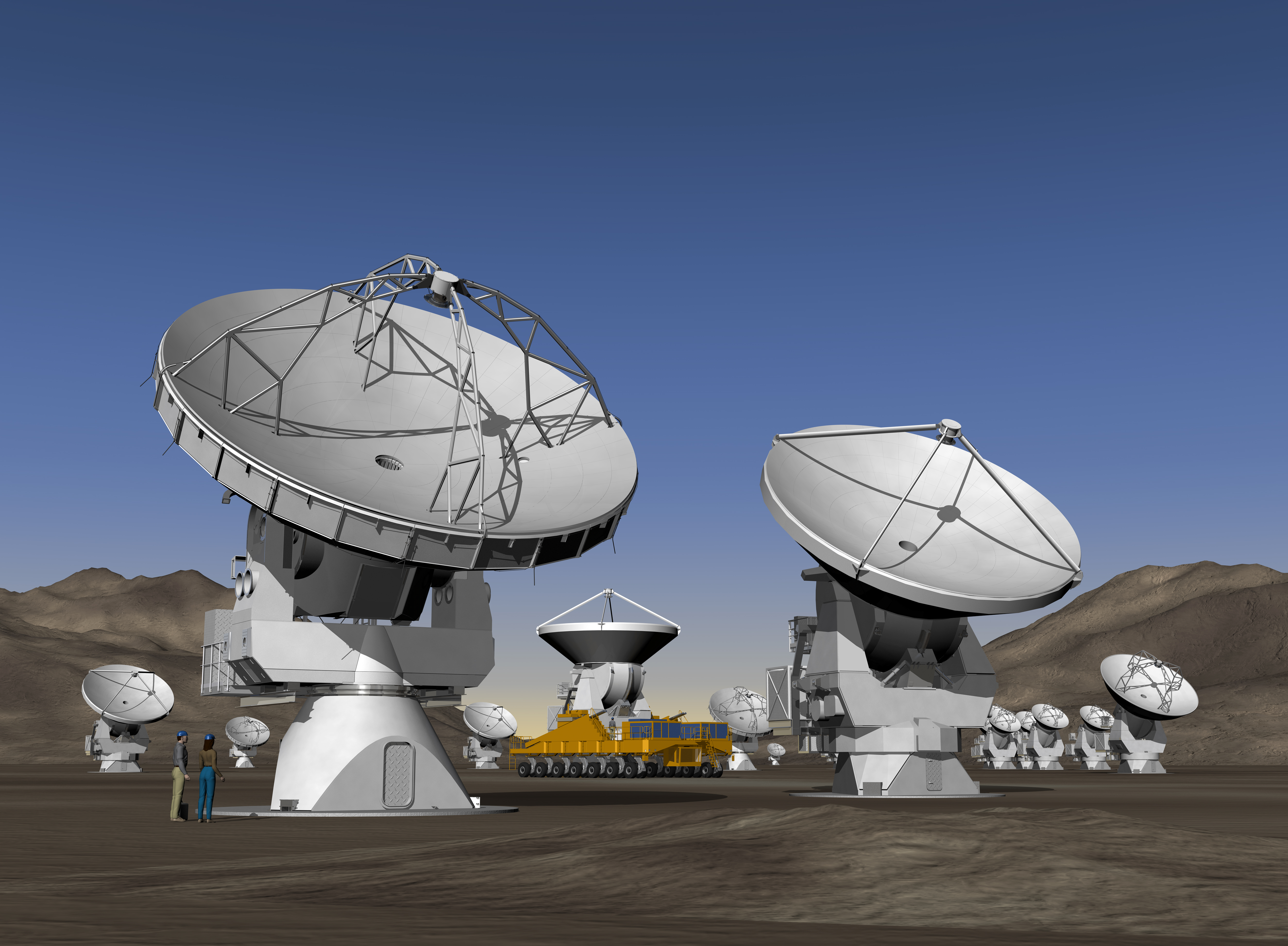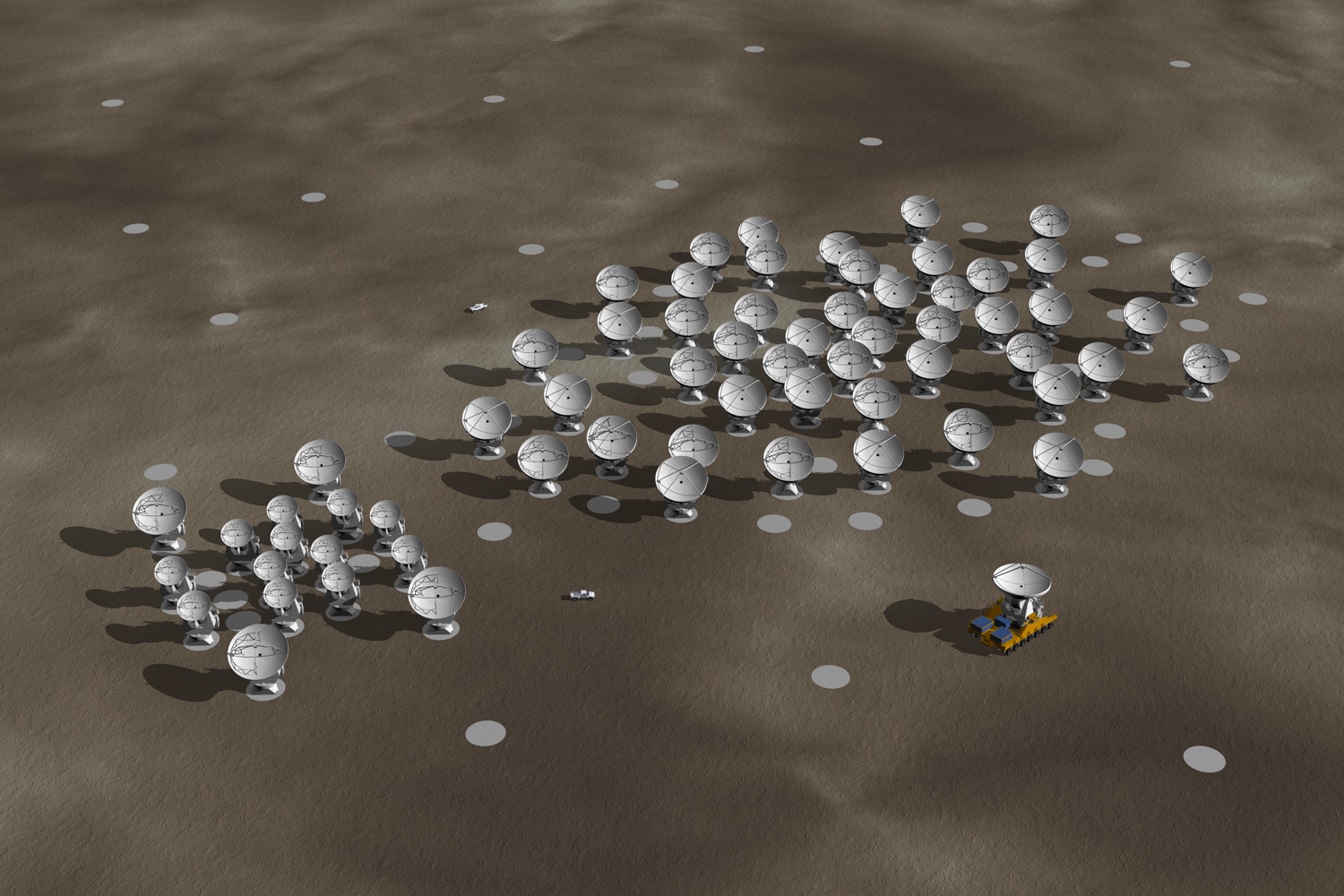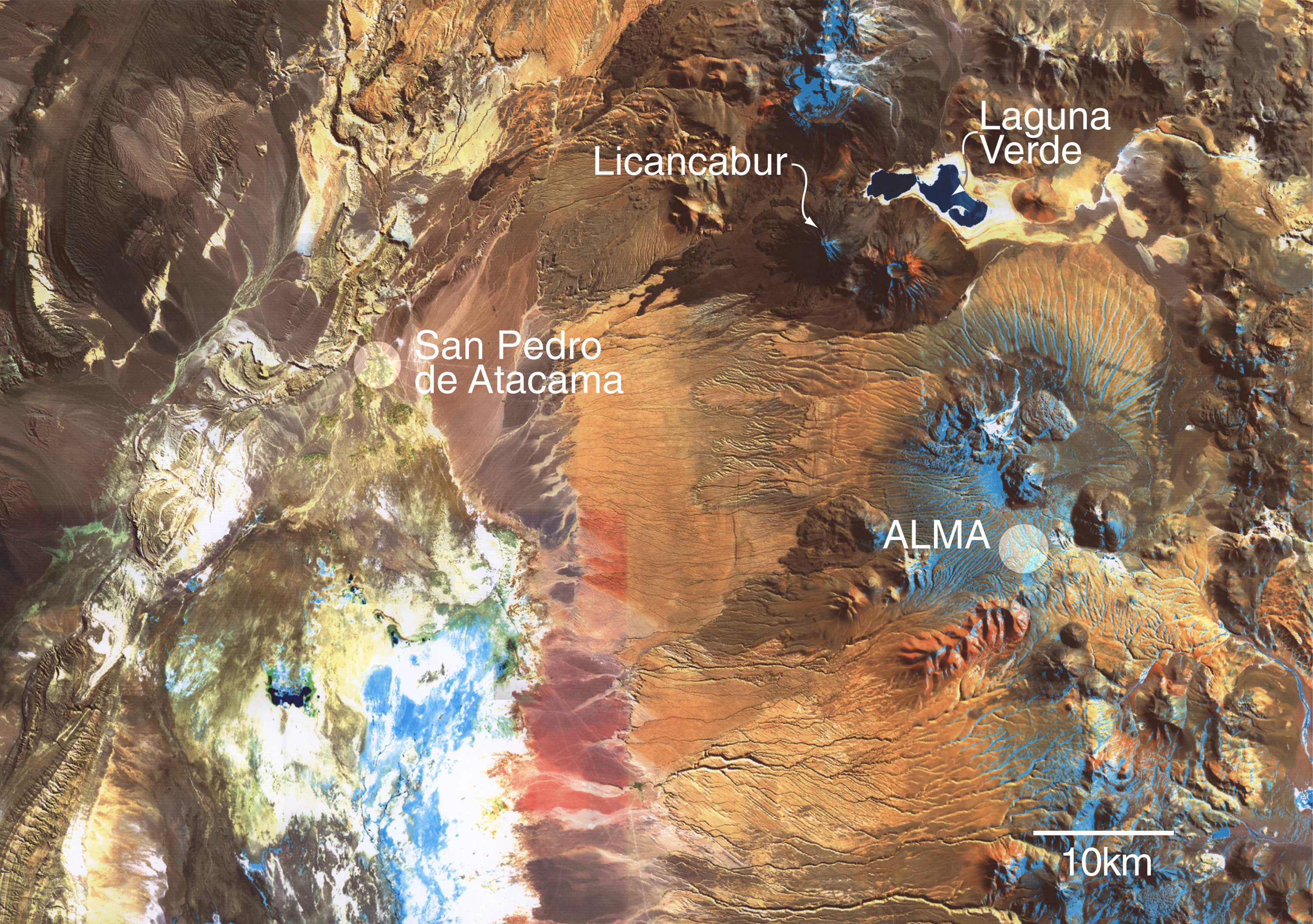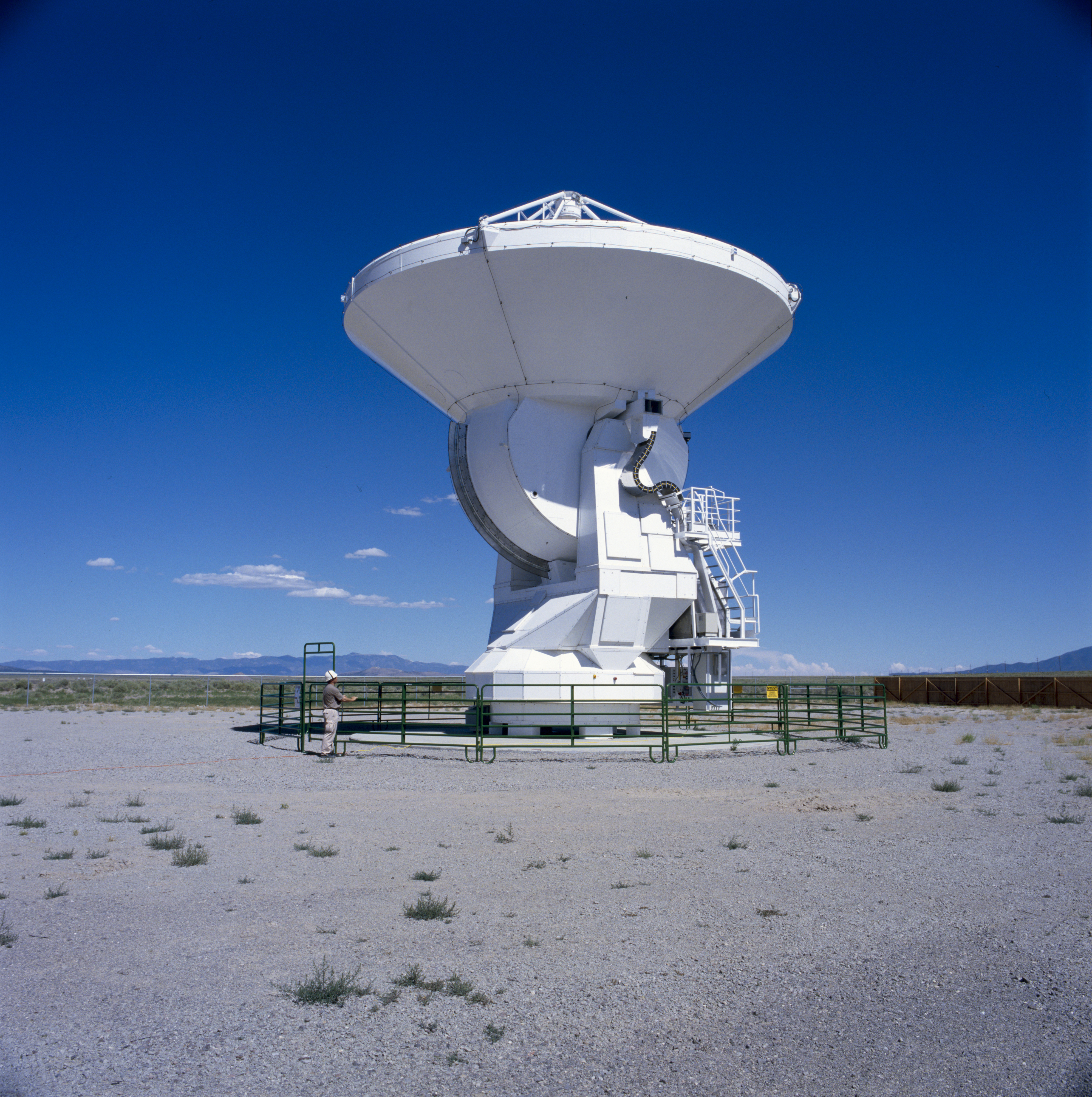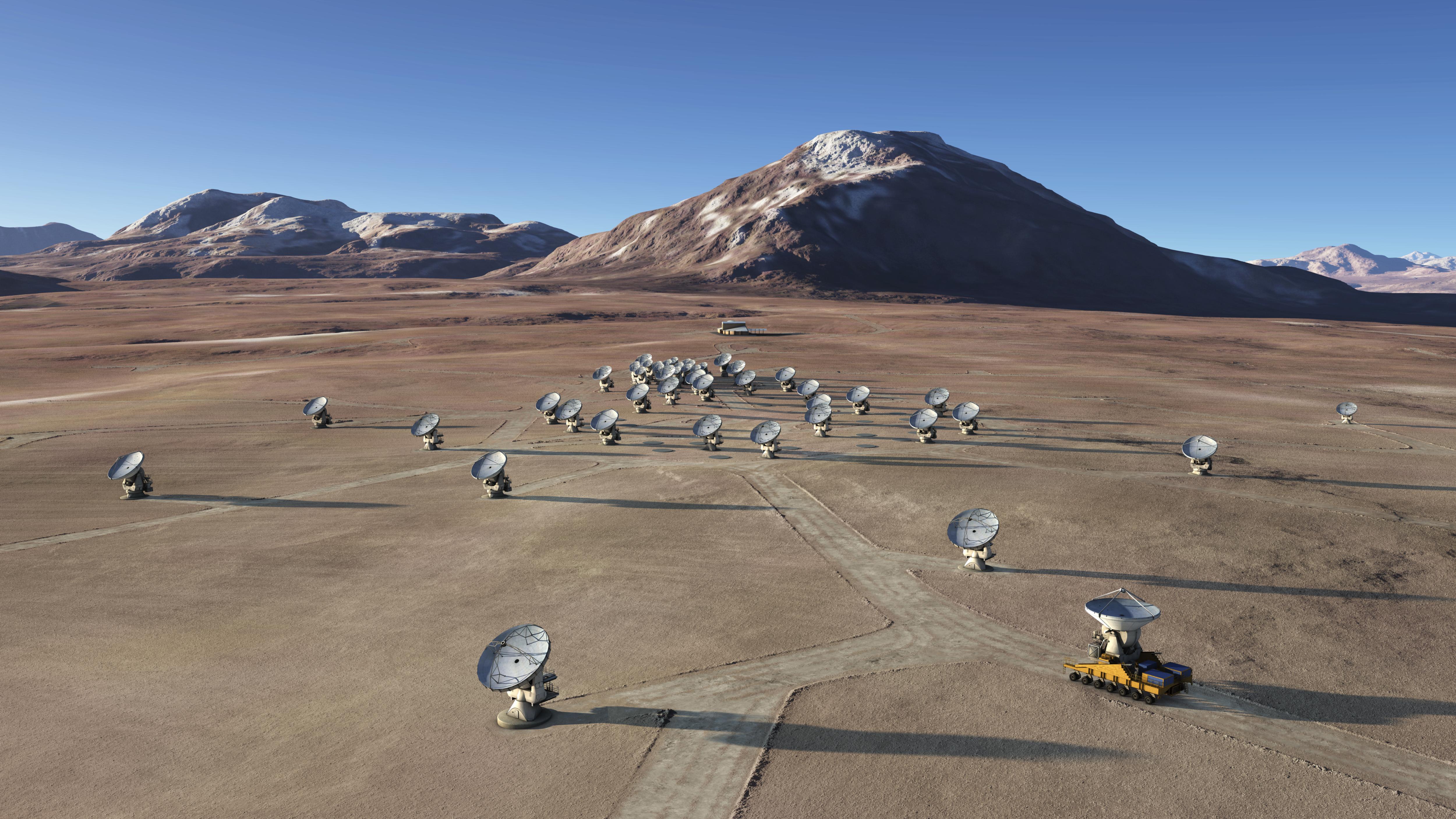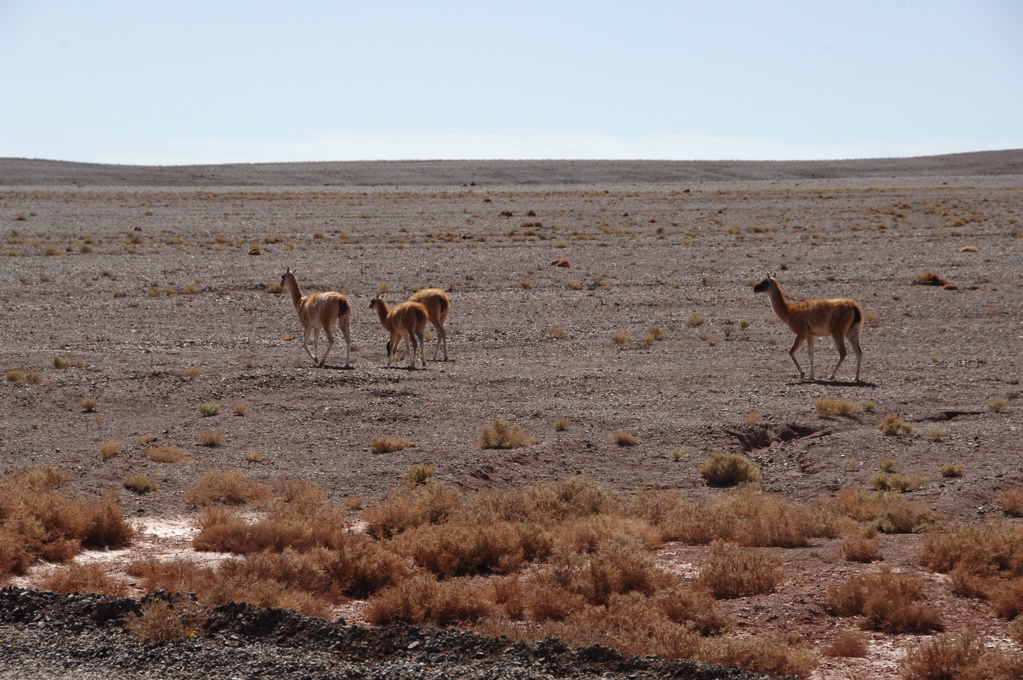About ALMA
Since 2005 ASIAA has participated in the Atacama Large Millimeter/Submillimeter Array (ALMA) project, the largest ground based astronomical project ever carried out. The array is comprised of at least 66 antennas, and is currently under construction in the Chajnantor area in the Atacama desert in northern Chile, one of the world's best sites for millimeter and submillimeter astronomy. ALMA will cover the wavelength range from 0.3 mm to 9 mm with an angular resolution of up to 4 milli-arcsec, giving 10 times sharper images than the Hubble Space Telescope. The quality of the observing site, combined with the unprecedented combination of sensitivity, angular resolution, spectral resolution and image fidelity made possible with ALMA, will enable astronomers to carry out transformational research in a wide variety of astronomical areas.
An international partnership among East Asia, Europe, and North America with the Republic of Chile is building ALMA. The North American and European partners are responsible for the construction of the 12m Array (ALMA baseline project), while Japan is responsible for the construction of the Atacama Compact Array (ACA; ALMA-Japan project). In September 2005, the Academia Sinica (AS) in Taiwan entered into an agreement with the National Institutes of Natural Sciences (NINS) in Japan to join the ALMA project through the ALMA-Japan project. In October 2008, the National Science Council (NSC) in Taiwan and the US National Science Foundation (NSF) reached an agreement for collaboration with ALMA-North America.






